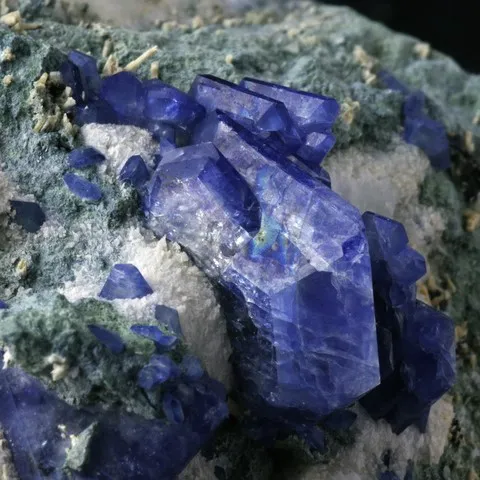BENITOITE
Class : Silicates
Subclass : Cyclosilicates
Crystal system : Hexagonal
Chemistry : BaTiSi3O9
Rarity : Very rare
Benitoite is a very rare mineral found in small veins of natrolite crossing a glaucophane schist intercalated with a serpentine, where it associates with neptunite. It owes its name to its place of discovery : San Benito County in California. It occurs in tabular prismatic crystals, truncated by three triangular pyramidal faces, more rarely in trigonal bipyramids. Its appeal is due to its superb sapphire blue to light blue, sometimes dark blue color. Benitoite is sometimes cut in jewelry and used as a fluorescent standard in certain electronic microprobes. But these uses remain marginal due to the rarity of its crystals.
Benitoite in the World
Benitoite in France
This mineral is not present in the French underground.
Fakes and scams
No fake recorded for this mineral species.
Hardness : 6 to 6.5
Density : 3.65
Fracture : Conchoidal
Trace : White
TP : Translucent to transparent
RI : 1.756 to 1.804
Birefringence : 0.046
Optical character : Uniaxial +
Pleochroism : Visible
Fluorescence : Blue under SW UV
Solubility : Hydrofluoric acid
Magnetism : None
Radioactivity : None






